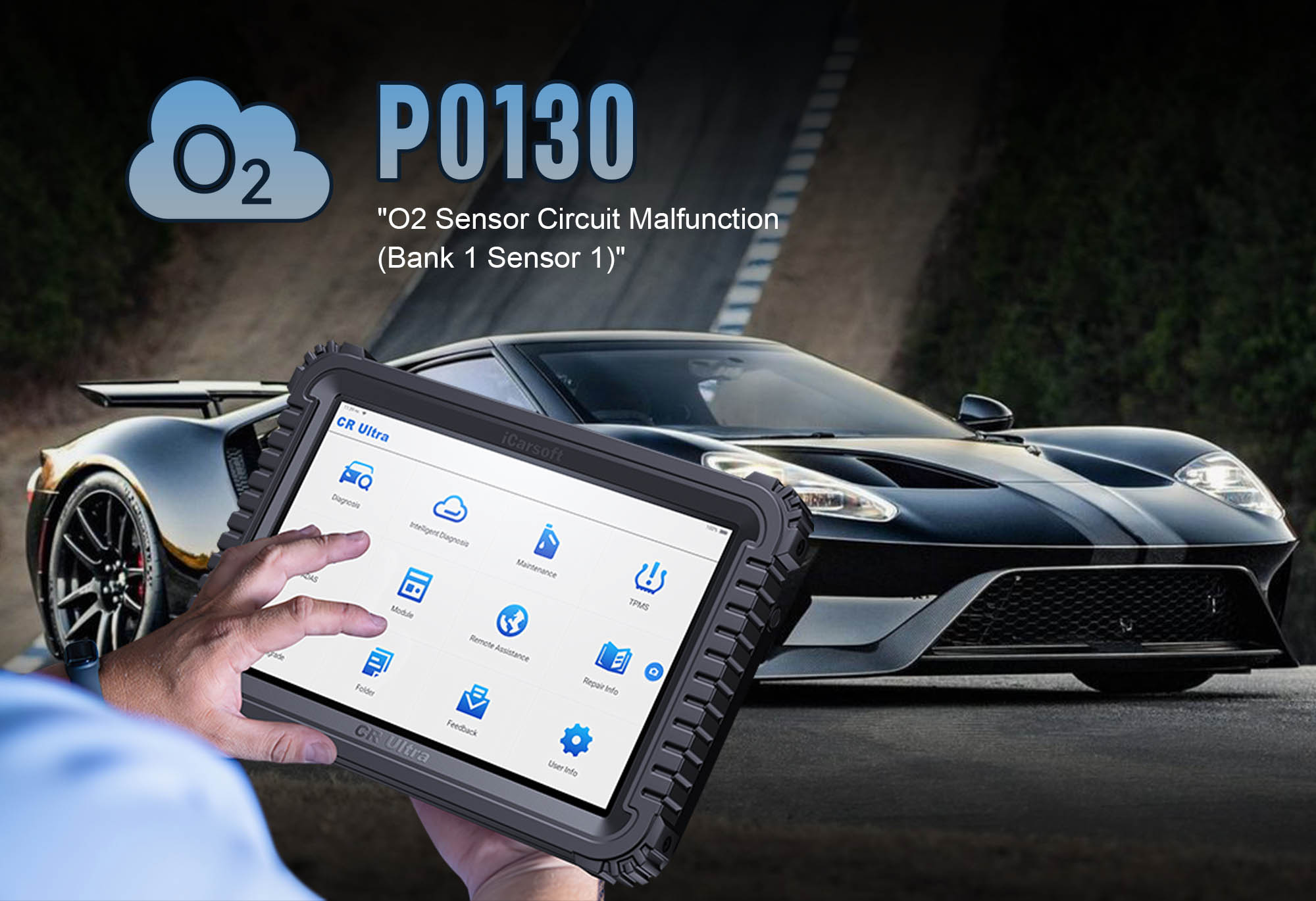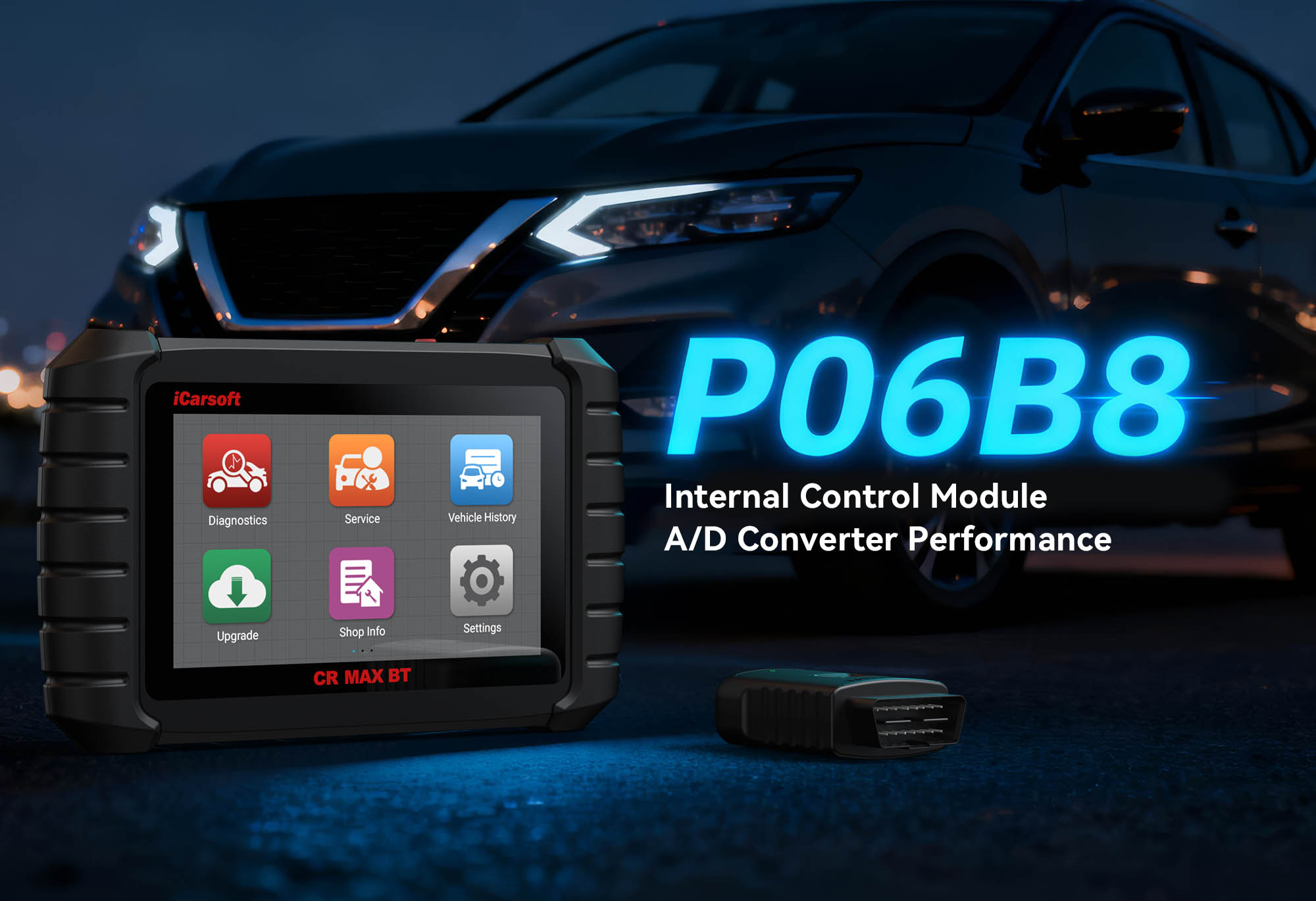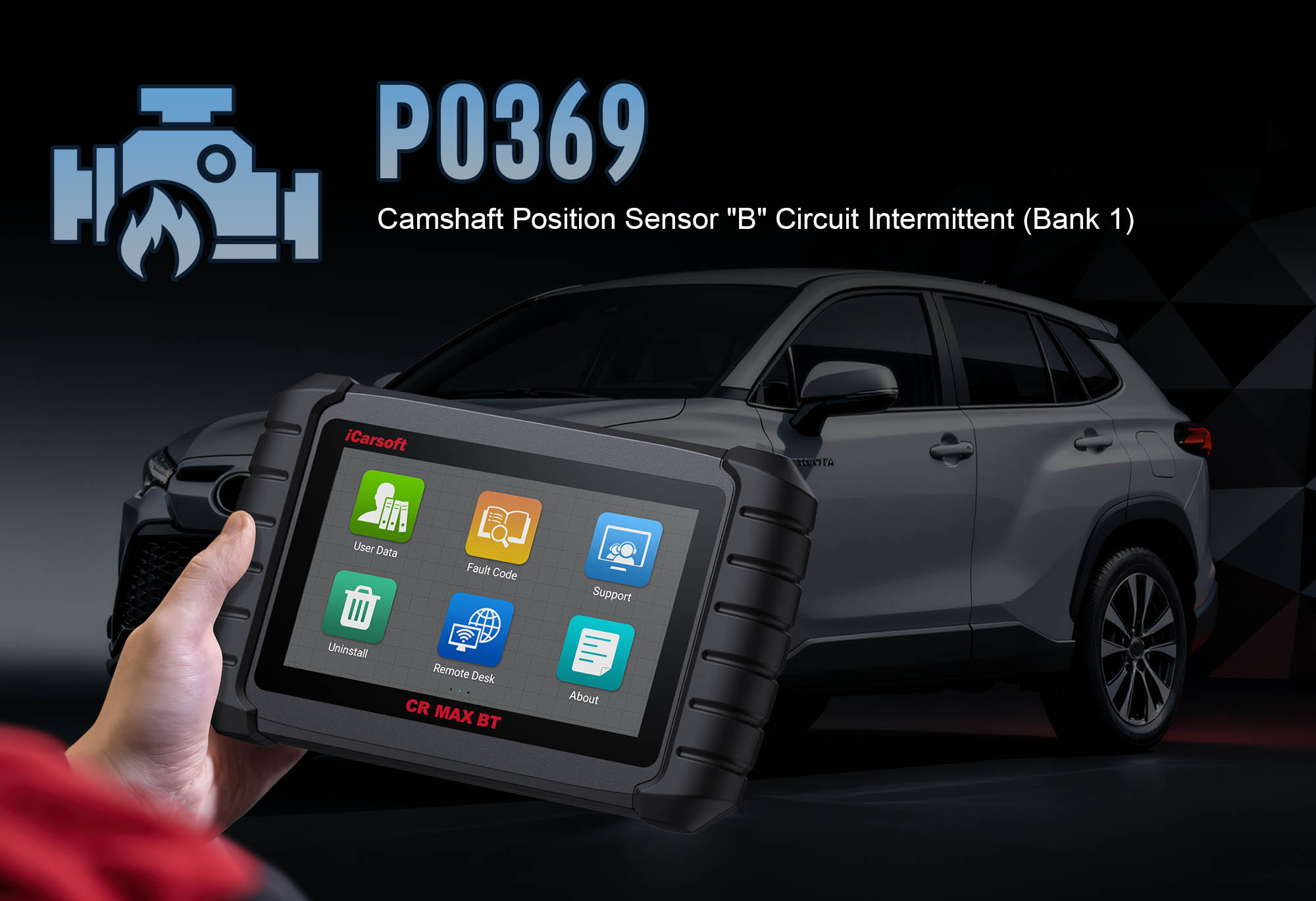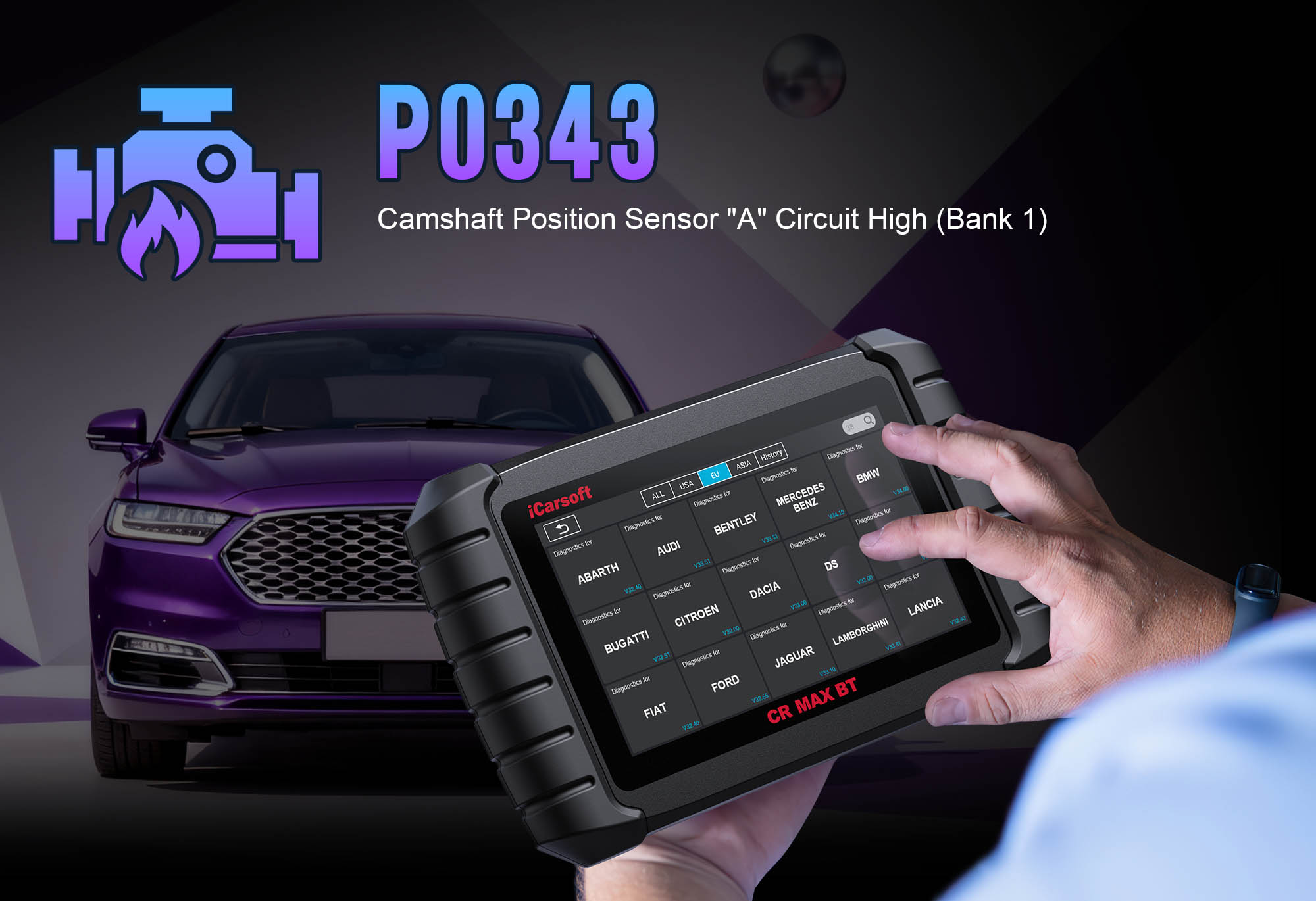Solving P0130: Diagnose and Repair Oxygen Sensor Issues with iCarsoft CR Ultra
The check engine light can be a source of stress, but when it’s triggered by P0130, you’re dealing with a specific, fixable problem: a malfunction in your vehicle’s oxygen sensor circuit. P0130 is a generic OBD-II code that points to a "Oxygen Sensor Circuit Malfunction (Bank 1, Sensor 1)"—the primary oxygen sensor responsible for monitoring unburned fuel in the exhaust and helping your engine maintain the ideal air-fuel ratio. Ignoring it can lead to poor fuel economy, increased emissions, and even damage to your catalytic converter. Fortunately, the iCarsoft CR Ultra puts the tools to diagnose and resolve P0130 right at your fingertips. Here’s how to take charge.
Understanding P0130: What’s Happening Under the Hood
The oxygen sensor (O2 sensor) Bank 1, Sensor 1 is located in the exhaust manifold or close to the engine, making it the first sensor to analyze exhaust gases. It sends real-time data to the engine control module (ECM), which adjusts fuel injection to keep the air-fuel mixture balanced. When this sensor or its circuit fails, the ECM can’t make accurate adjustments, triggering P0130.
Common causes include:
-
A worn-out oxygen sensor (most typical in high-mileage vehicles)
-
Damaged wiring or loose connectors in the sensor circuit
-
A faulty sensor heater (which warms the sensor to operating temperature)
-
Contamination from oil or coolant leaks (fouling the sensor’s elements)
-
A blown fuse powering the sensor circuit
Unlike more complex codes, P0130 narrows the issue to a specific component, making it a prime candidate for DIY diagnosis with the right tool.
Why iCarsoft CR Ultra is Ideal for P0130
The CR Ultra isn’t just a basic code reader—it’s engineered to dig into the details of O2 sensor performance. Here’s why it’s perfect for tackling P0130:
Code Context & Specifics
Beyond reading P0130, it provides details like whether the issue is with the sensor’s signal, heater circuit, or wiring—eliminating guesswork.
Live O2 Sensor Data
Streams real-time readings from the sensor, showing voltage fluctuations. A healthy sensor should cycle between 0.1V (lean) and 0.9V (rich); flat or erratic readings confirm a problem.
Heater Circuit Testing
Checks if the sensor’s heater is working by monitoring current draw, helping you distinguish between a faulty sensor and a wiring issue.
Multi-Brand Compatibility
Works with 58+ vehicle makes, from Honda and Chevrolet to BMW and Audi, ensuring it pairs with your car’s system.
Freeze Frame Analysis
Captures conditions (engine temp, RPM, load) when P0130 was triggered, revealing patterns (e.g., the code appearing only when the engine is cold).
Step-by-Step: Fixing P0130 with iCarsoft CR Ultra
-
Confirm the Code and Gather Details
Plug the CR Ultra into your car’s OBD-II port and power it on. Select your vehicle’s make, model, and year (or use AutoVIN for automatic detection). Navigate to "OBD-II" > "Read Codes" to pull up P0130. Note the freeze frame data—this can hint at whether the issue is temperature-related or consistent.
-
Analyze Live O2 Sensor Readings
Go to "Live Data" > "Oxygen Sensors" and select "Bank 1, Sensor 1." Start the engine and let it warm up. A functional sensor will show voltage cycling rapidly. Flatline readings (e.g., stuck at 0.5V) or no response indicate a failed sensor or broken circuit.
-
Test the Heater Circuit
Access "Component Tests" > "Oxygen Sensor Heater." The CR Ultra will check if the heater is drawing the correct current (typically 0.5–1.5A). A reading of 0A suggests a broken heater element or wiring; excessive current points to a short.
-
Inspect Wiring and Connections
Use the CR Ultra’s "Component Location" feature to find the Bank 1, Sensor 1 position (usually on the exhaust manifold). Check for damaged wires, corroded connectors, or loose plugs. Clean connectors with electrical contact cleaner and repair any frayed wiring.
-
Replace the Sensor (if needed) and Verify
If tests confirm a faulty sensor, replace it with a manufacturer-recommended part (the CR Ultra’s "Parts Reference" can suggest compatible options). After installation, use the CR Ultra to "Clear Codes." Take a 20-minute test drive, then re-scan to ensure P0130 doesn’t return. Use "I/M Readiness" to confirm the system has completed self-checks.
Tips to Prevent P0130 from Recurring
-
Replace O2 sensors every 60,000–100,000 miles (check your owner’s manual) to avoid wear-related failures.
-
Fix oil or coolant leaks promptly—contamination is a leading cause of sensor damage.
-
Use the CR Ultra’s "Emissions System Check" quarterly to monitor sensor health before codes appear.
With the iCarsoft CR Ultra, P0130 becomes a straightforward repair. Its ability to analyze live sensor data, test circuits, and guide you to the root cause means you can avoid costly dealer visits and fix the issue with confidence. Whether you’re a home mechanic or a pro, this tool turns oxygen sensor problems from a mystery into a manageable task.
Don’t let P0130 hurt your fuel economy or emissions. Grab your CR Ultra and get your engine back to peak performance.





